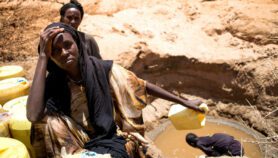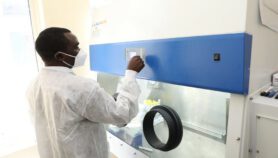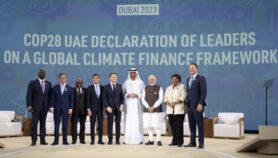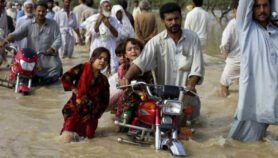By: T.V. Padma
Send to a friend
The details you provide on this page will not be used to send unsolicited email, and will not be sold to a 3rd party. See privacy policy.
[AHMEDABAD] India’s prime minister Manmohan Singh has urged scientists not to repeat the work of others but instead to build on existing knowledge to generate new technologies and science-based solutions.
One area that Singh foresees a greater role for Indian scientists in is preparing for and reacting to natural disasters. In his opening speech to the 92nd Indian Science Congress — the largest annual gathering of Indian scientists — in Ahmedabad on Monday (3 January), Singh urged Indian researchers must not to “remain silent witnesses” to such disasters.
He said Indian scientists must rise to the challenge of understanding phenomena that lead to natural disasters and the human activities that aggravate them.
“The question has been asked if we could have made better use of modern science and technology to alleviate, if not prevent, human suffering,” said Singh, refering to the 26 December tsunami that struck South and South-East Asia.
Singh emphasised that while the Indian government was prepared to fund the necessary research and invest in the required technologies for disaster warning, India should link itself to systems already in place and not try to re-invent the wheel.
Instead, said Singh, India should invest in better use and wider dissemination of existing knowledge.
In line with this statement, Rangnath Navalgund, director of the Hyderabad-based National Remote Sensing Agency, announced on Tuesday (4 January) that his agency will set up a ‘decision support centre’ to synthesise data it gathers on potential natural disasters such as floods, cyclones and avalanches.
Navalgund said the centre would produce information in a format that could be readily retrieved and used by communities so that timely action could be initiated in the event of a natural disaster.
He pointed out, however, that discovering new drugs was becoming increasingly expensive, taking up to 15 years and costing US$1.5 billion dollars to take a single molecule to the market.
The second is a genetically engineered hepatitis-B vaccine from Hyderabad-based Shanta Biotech, which brought the price of the vaccine down from $US15 per dose in India to less than US$1. The company now supplies the vaccine to UNICEF for US$0.50 a dose.
Singh also identified the agriculture and energy sectors as ones that could and should benefit from technological innovation.
“We need a new technological revolution in the energy sector aimed at meeting the growing demand for energy in more economical and sustainable ways”.
Finally, Singh said Indian researchers should take a greater interest in science and maths syllabuses in school in an effort to recruit more young minds to science.
“We have to improve the quality of teaching and increase the enrolment of students in science and mathematics at the school level,” concluded the prime minister. “Indian science needs a new boost, a new lease of life, a push into the future.”












